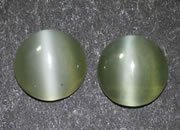 |
Actinolite (Cat's Eye)
Actinolite is green to grayish green mineral of the amphibole group
found in metamorphic rocks. It sometimes has a fibrous texture that
produces strong cat's eye. |

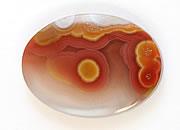 |
Agate is a cryptocrystalline quartz that is translucent and patterned
with bands, plumes, dendrites, or inclusions that produce a colorful,
interesting appearance. It is a popular gem cut into cabochons,
beads, and ornamental objects. |

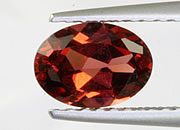 |
Almandine garnet, also known as "almandite," is an iron-rich,
red-to-purple garnet that is geologically very common and typically
sells on the more affordable side of the garnet price range. For that
reason, it is common in jewelry. |

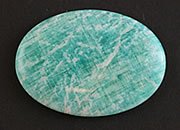 |
Amazonite
is a trade name given to a light green to bright green variety of
microcline feldspar. It has a Mohs hardness of 6 with perfect cleavage,
so it is best used where it will not suffer abrasion or impact. |

 |
Amber is a fossilized resin that was secreted by ancient trees. It
usually has a yellowish to orangish brown color but can be white,
greenish, bluish or even black. It is easily cut and polished into
bright, lightweight gems. |

 |
Amethyst
is a transparent variety of quartz that ranges from light lilac to
deep purple in color. It is one of the most popular faceted gemstones
and is sometimes cut en cabochon. It is found in deposits around the
world. |

 |
Ametrine
is a bicolor quartz that is half AMEthyst and half ciTRINE. The color
combination is caused by twinning. Mined commercially at only one mine
in the world, located in eastern Bolivia. |

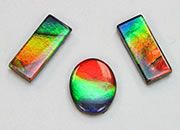 |
Ammolite is a trade name used for iridescent ammonite shell material. It
produces a bright flash of color that rivals fine opal and labradorite.
All of the world's production comes from a small area in Alberta,
Canada. |

 |
Ammonite
An extinct group of marine invertebrate animals that produced a
chambered shell. Their fossilized shells are often cut and used as an
ornamental or jewelry stone.
|

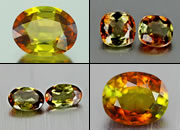 |
Andalusite is a metamorphic mineral that is strongly pleochroic and is
underappreciated as a gem. A variety known as chiastolite has grains of
graphite concentrated into a cross-shaped feature. |

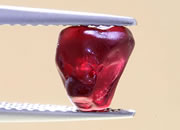 |
Ant hill garnet is a novelty gem that ants excavate, haul to the
surface and deposit on their ant hill. These red chrome pyrope garnets
are often found on ant hills in parts of the southwestern USA. |

 |
Apatite is a mineral that is cut as a gem when found in clear crystals
with attractive colors. It has a hardness of 5 on the Mohs scale and is
brittle. It is a "collector's gem" rather than a jewelry gem. |

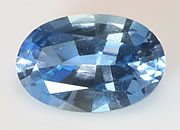 |
Aquamarine is a blue variety of the mineral beryl. It receives its
name from its seawater color. It ranges from a very light blue to a
richly saturated blue, with the richer color being much more desired. |

 |
Aventurine
Aventurine quartz that contains a blizzard of tiny reflective mineral
inclusions such as mica grains or hematite flakes. When light enters the
quartz it hits the reflective grains which produce a sparkle known as
aventurescence. |

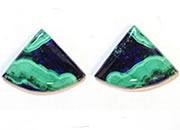 |
A
beautiful dark blue opaque gemstone found near copper deposits. Often
associated with malachite and chrysocolla. It is soft (H: 3.5-4) and
cleaves easily. Cut into cabochons for jewelry that will not
encounter wear. |

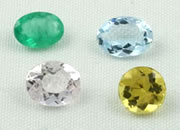 |
"Beryl" is a mineral with several gem varieties based upon color.
Green beryl is emerald. Blue is aquamarine. Pink is morganite. Yellow
and yellow-green are heliodor. Red is red beryl. Clear is goshenite. |

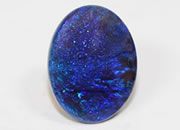 |
The name "black opal" is used for an opal with a black base color. This opal has blue play-of-color on a black base. There are many types of opal. |

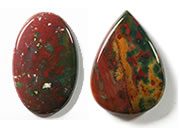 |
Bloodstone
Bloodstone is a dark green variety of jasper that has numerous
splashes of red color. These red splashes remind people of blood, and
that is how the stone received its name. |

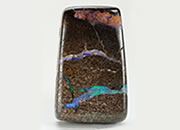 |
"Boulder opal" is a name used for a rough or cut material that displays
precious opal within its surrounding rock matrix. There are many types of opal. |

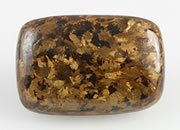 |
Bronzite
A bronze to greenish variety of enstatite with a metallic luster that is sometimes cut and polished as a gemstone.
|

 |
Bumblebee
Often called Bumblebee "Agate" or "Jasper", it is instead a rock
formed at several volcanic vents in Indonesia. Some specimens
reportedly contains arsenic. Not recommended for jewelry or other
extended contact with your skin. |

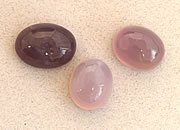 |
Chalcedony
Chalcedony is a name used for any cryptocrystalline quartz such
as agate, jasper, petrified wood, chrysoprase, bloodstone, onyx, sard,
and carnelian. Some people reserve the name for a blue, unbanded,
translucent material. |

 |
Charoite
Charoite is a light lavender to deep purple silicate mineral that
has swirling, fibrous, or spotted patterns. It is a rare and relatively
new gem material, discovered in Russia in 1978. |

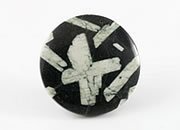 |
Chinese Writing Stone
A very interesting black metamorphosed limestone that contains
geometric crystals of andalusite. Named because some people think the
white andalusite crystal shapes remind them of "chinese writing". |

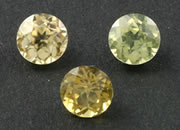 |
Chrysoberyl, a gem unrelated to "beryl," is an "extreme gem." It
has a hardness of 8.5, a very high luster, and a high index of
refraction. It is sometimes a color-change stone and is best known for
its "cat's eye." |

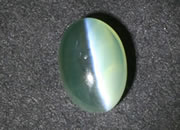 |
Chrysoberyl often contains oriented inclusions that produce a sharp
line of light across the surface of the stone in reflected light. This
optical phenomenon is known as a "cat's eye." |

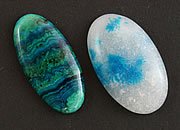 |
Chrysocolla
Chrysocolla is a green to blue-green gem material that forms
during the oxidation of copper deposits. The cab on the left is
malachite with chrysocolla. The cab on the right is blue chrysocolla
in white quartz. |

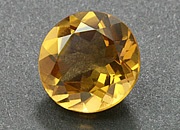 |
Citrine is a transparent variety of quartz that ranges from golden
yellow to yellowish orange to golden brown in color. It is usually cut
as a faceted stone and is sometimes produced by applying heat treatment
to amethyst. |

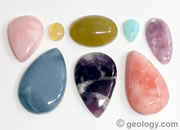 |
Common
opal is an opal material that does not exhibit a "play-of-color." Most
common opal is common in appearance, but some is spectacular in color or
pattern. There are many types of opal. |

 |
Coral is a colonial organism that lives in warm, shallow marine waters
and often develops reefs. It is a hard calcium carbonate material that
can be cut or carved and polished into beautiful gems. |

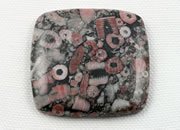 |
Crinoids are organisms that once lived on the ocean floor. They
looked like a plant but were actually an invertebrate animal. Their
fossils can be found in limestone that can often be used to produce
interesting gems. |

 |
Crystal opal is a term used for transparent-to-translucent opal material that has a play-of-color within the stone. There are many types of opal. |

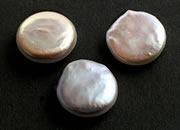 |
Cultured pearls are produced by placing small "seeds" of shell material
within a live freshwater mussel. The mussel then coats the seed with
successive layers of nacre to form a pearl. They are produced in a
variety of shapes. |

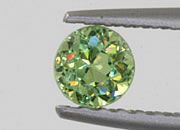 |
Demantoid is a calcium-rich garnet. It has the highest dispersion
(ability to separate white light into colors of the spectrum) of any
gemstone - higher than diamond. This gives demantoid an exceptional
"fire." |

 |
The most popular gemstone and hardest natural material. A nearly
colorless diamond is set in most engagement rings sold in the United
States. The custom of giving an engagement diamond is spreading to other
countries. |

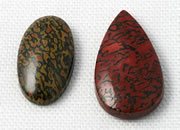 |
Dinosaur bone is often petrified (fossilized by being infilled and
replaced by quartz). The quartz can be very colorful. When the
petrification is thorough, the material can be cut and polished into
attractive gems. |

 |
Diopside is a magnesium, calcium silicate mineral. It often contains
traces of chromium that cause a vivid green color. These stones are
known as "chrome diopside" and can serve as an alternative gem for
emerald. |

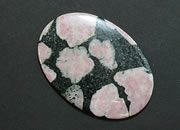 |
Diorite is an igneous rock that can accept a bright polish. It is
usually a mixture of dark and light-colored minerals. When these are of
attractive colors, the rock can be cut into nice cabochons, beads, and
other lapidary items. |

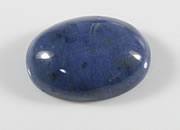 |
Dumortierite
Dumortierite is a dark blue to dark greenish-blue mineral found in
metamorphic rocks. It is typically opaque and used to produce cabochons,
beads and tumbled stones |

 |
Emerald is the gemstone name of the mineral beryl when it has a rich
green color. It is the most popular stone from the beryl mineral
group. Most emeralds have abundant inclusions and fractures. |


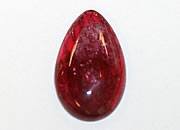 |
Eudialyte
Eudialyte is a rare mineral found in igneous rocks. It serves as a
minor ore of zirconium and as a minor gem mineral. It occurs in yellow,
brown and bluish crystals - but bright red specimens are favored as a
collector's gem. |

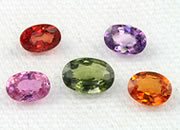 |
"Fancy sapphire" is a name used for a gem corundum that has a body color other than blue (sapphire) or red (ruby). |

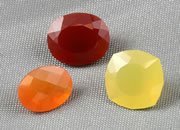 |
A translucent-to-transparent opal
with a warm background color of yellow, orange or red. It may or may
not exhibit a "play-of-color." The warm, uniform background color is
what defines the stone. There are many types of opal. |

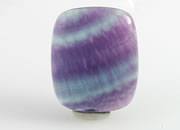 |
A mineral composed of calcium and fluorine (CaF2) that can be colorful and attractive and is often cut as a gemstone.
|

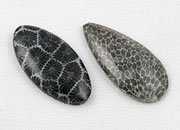 |
Coral and bryozoans are organisms that live in warm, shallow
marine waters. They are often fossilized by being infilled and replaced
with quartz or calcite. These materials can be polished into attractive
gems. |

 |
Garnet is the name of a group of minerals with a common crystal
structure, but they vary in composition. Most garnets are red in color,
but the stone also occurs in orange, yellow, purple, green, pink,
black, and other colors. |

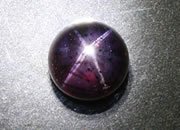 |
Rare specimens of garnet contain a rutile silk that allows them to
display a four- or six-ray star when cut properly. They are highly
valued and found in commercial quantities only in India, Madagascar, and
Idaho. |

 |
A man-made glass produced by fusing ash from the 1980 Mount St. Helens
eruption. It is sold in novelty jewelry to tourists visiting the
eruption site.
|

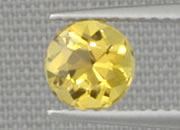 |
Heliodor is the name given to yellow to yellow-green gems of the beryl
mineral group. They can be attractive, durable, high-clarity stones
with a relatively low price. Surprisingly, they are infrequently seen in
jewelry. |

 |
Hematite
Hematite is an iron oxide mineral and the primary ore of iron. It
occasionally occurs in a silver metallic form that can be polished to a
mirror-bright luster. Cabs cut from hematite are very popular and have a
very "weighty" feel. |

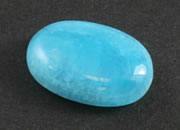 |
Hemimorphite
Hemimorphite is a zinc silicate mineral that occurs in white, blue and
greenish blue colors. It is a minor ore of zinc. It lacks durability and
is used as a collector's gem or in jewelry that will be subject to
light wear. |

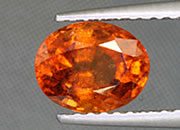 |
Hessonite is a variety of grossular garnet that is rich in iron and
manganese. It has an orange to red-orange to reddish brown color and
is sometimes called "cinnamon stone." It is occasionally seen in
jewelry. |

 |
Iolite is the name given to gem-quality cordierite. It is a strongly
pleochroic gem material that, when properly oriented, can produce
gemstones with a deep bluish color similar to sapphire and tanzanite. |

 |
Iris agate is a finely banded agate with a spectacular display of
color when it is cut into thin pieces and illuminated from a direction
that sends light through its very thin bands. |

 |
An
extremely durable material that has been fashioned into gems,
sculptures, tools, and weapons for thousands of years. Extremely popular
in China. There are two varieties: jadeite and nephrite. |

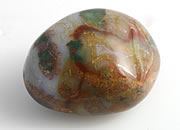 |
Jaspagate
A variety of chalcedony that displays characteristics of both jasper
and agate. It has both opaque areas and translucent areas. |

 |
Jasper
A variety of opaque chalcedony that is often brightly colored by
impurity inclusions. It can be almost any color and is popular as beads,
cabochons and tumbled stones. |

 |
Jet is a coal with a uniform texture that can be cut into
attractive black gems. It was popular in mourning jewelry of Victorian
England. It has a low specific gravity, which makes a long strand of
beads lighter than expected. |

 |
A metamorphic mineral that occurs in beautiful hues of blue and green.
It has perfect cleavage and has a hardness of 4.5 in one direction,
5.5 in another, making it best used in items that will not be subjected
to wear. |

 |
A
gemstone from the plagioclase feldspar family that produces flashes of
iridescent blue, green, yellow, orange, or red when moved under
incident light. This luster is known as labradorescence. |

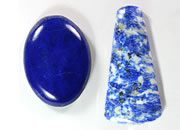 |
A blue metamorphic rock that has been used as a gemstone for over 6000
years and as a pigment for at least 1000 years. It is a popular gem
material used for cabochons, beads, inlay and small sculptures. |

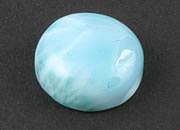 |
Larimar
Larimar is a rare blue variety of pectolite found only in the
Dominican Republic. It is popular because of its delicate blue color. It
must be used with care because it is fragile and will fade with long
exposure to bright light. |

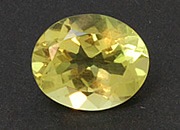 |
Lemon quartz is a yellow variety of quartz that is transparent to
translucent. It is often cut as a faceted stone or cut en cabochon. |

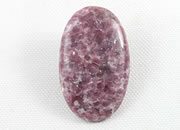 |
Lepidolite
A lithium-rich mica with a rose to lilac color and an aventurescent
luster that is sometimes used to make cabochons, tumbled stones and
other lapidary projects.
|

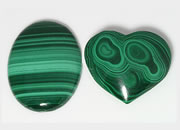 |
Malachite is a heavy, opaque, green gemstone marked with bands and
swirls. It is a copper carbonate mineral that is soft and cleaves
easily. It is best used in items that will not be subjected to abrasion
or impact. |

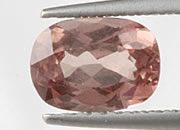 |
Malaya is a pink to pinkish brown or reddish variety of garnet.
Compositionally, it is a mixture of pyrope, almandine, and spessartine.
It is occasionally seen in jewelry. |

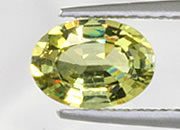 |
Mali is a yellow to yellowish green variety of garnet, named after the
African country of Mali. It is a mixture of grossular and andradite that
is occasionally seen in jewelry. |

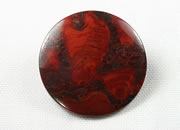 |
Mary Ellen is a rock that consists of red jasper and silvery hematite.
The jasper is a fossil stromatolite, a layered structure built up by
sediment-trapping algae that lived on Earth about two billion years
ago - long before land plants. |

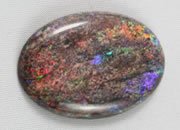 |
Matrix opal is a material in which precious opal is in an intimate
mixture with the host rock, instead of being confined to seams and
patches. There are many types of opal. |

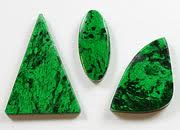 |
Maw sit sit is a rock composed of jadeite, albite, and kosmochlor (a
mineral related to jadeite). It is attractive, has a bright chrome
green color and accepts a bright polish, and for those reasons it is
used as a gemstone. |
 | | |
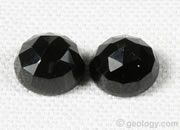 |
Melanite is a lustrous, black, opaque variety of garnet that is not
often seen in jewelry. It is a titanium garnet of the Andradite group
and is sometimes called "titanian andradite".
|

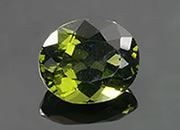 |
Moldavite is a glassy material that is thought to have formed when a
large asteroid impacted a location in Europe about 15 million years ago.
The target rock and impactor melted and solidified into an olive green
glass.
|

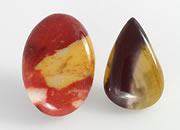 |
Mookaite
A colorful gem material mined in Australia that forms from the
deposition and lithification of a sediment composed of the silica tests
of radiolarians. It is a popular material for cabochons and beads. |

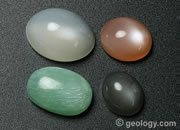 |
Moonstone
Moonstone is a name given to translucent orthoclase feldspar that
exhibits adularescence (a white-to-bluish light that floats under the
surface of the stone when it is turned under a source of light). |

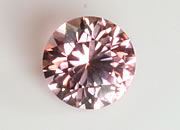 |
Morganite, also called "pink beryl," is the pink- to salmon-colored gemstone member of the beryl mineral group. |

 |
Moss Agate
Moss agate is a transparent-to-translucent chalcedony that contains
mineral inclusions that are shaped like moss, trees, leaves, or other
vegetation. Material from Montana localities is very popular. |

 |
Mother of pearl, also known as "MOP," is the thin inner nacreous layer
of a mollusk shell. It can be white, cream, or gray in color with a
beautiful iridescent play-of-color. Used in jewelry, buttons, musical
instruments, and more. |


 |
Nephrite and jadeite are two very similar minerals that are both known
as "jade." Nephrite is the more abundant and less valuable mineral of
the pair - but it can still have great beauty and appeal. |

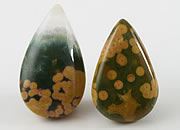 |
Ocean Jasper
A gem material named because it is found below the high tide line of a
Madagascar ocean beach. It is patterned with beautiful eyes and bands
in a wide variety of colors. It also can grade from agate to jasper in a
single stone. |

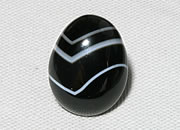 |
Onyx is the name given to a black chalcedony with parallel white banding
or a red chalcedony with white banding. High-quality pieces are
sometimes used to carve cameos. |

 |
A variety of petrified wood from Australia. Some pieces have white
markings that remind people of peanuts. It is a fossil driftwood that
has been bored by marine clams. |

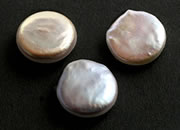 |
Pearls are a very popular gem material. They are produced by shellfish,
and people have used them for personal adornment for thousands of
years. These are cultured freshwater pearls produced in Tennessee. |

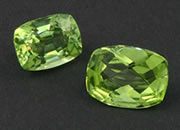 |
Peridot
is a popular green gemstone from the olivine mineral series. It is
widely used in commercial jewelry and is a birthstone for the month of
August. |

 |
Louisiana has been the "bayou state" for over 100 million years. During
that history, many palms have been fossilized. Today they are called
"petrified palm wood" (but they really are not wood) and polished into
beautiful gems. |

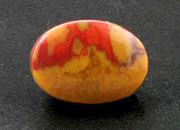 |
A fossil that is formed when woody material is buried, then dissolved
materials in groundwater precipitate to replace and infill the wood
structure with silica, opal, or other mineral material. |

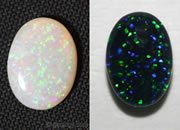 |
An opal that exhibits pin points of fire instead of a broad flash is known as "pinfire opal." There are many types of opal. |

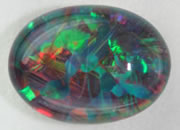 |
A
spectacular gemstone that produces flashes of iridescent color when
moved under incident light. The color display is known as
"play-of-color." There are many types of opal. |

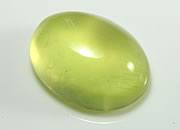 |
Prehnite
Prehnite is a calcium aluminum silicate mineral. Specimens with nice
color and clarity are often cut as gems. This gemmy yellow prehnite
cabochon was cut from material mined in Australia. |

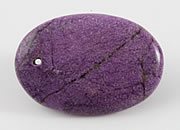 |
Purpurite
Purpurite is a manganese phosphate mineral with a bold purple color
that is often cut into cabochons. It has a low hardness (4 to 5) so is
best used in jewelry that is not expected to receive rough wear. |

 |
Pyrope is a magnesium aluminum garnet that is usually red in color. It
is often formed in the mantle and transported to the surface in
deep-source volcanic eruptions that form diamond deposits. |

 |
Quartz is the most common mineral in Earth's crust and often occurs in
colored gem-quality crystals. These include rose quartz, amethyst, smoky
quartz, citrine, lemon quartz, and others. |

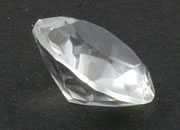 |
Clear quartz is a common mineral material that is sometimes cut as a
gem. It is often called "crystal quartz" or "rock crystal." It is the
state mineral of Arkansas. |

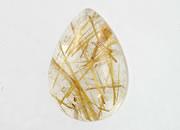 |
Rare specimens of clear quartz have needle-shaped inclusions of rutile.
These can be used to cut interesting and attractive cabochons and
faceted stones. |

 |
Rare specimens of clear quartz have needle-shaped inclusions of
tourmaline. These can be used to cut interesting and attractive
cabochons and faceted stones. |

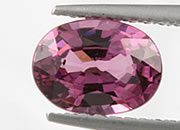 |
Rhodolite is a purplish red to violet-red variety of garnet that is a
combination of pyrope and almandine. It often has wonderful color and
clarity at a relatively low cost - and that is helping it become
popular in jewelry.
|

 |
Rhodochrosite is a manganese carbonate mineral that is popular because
of its beautiful pink color. It is typically has lacy or concentric
bands. Its softness limits its use to earrings, pendants, pins and other
low-abrasion items.. |

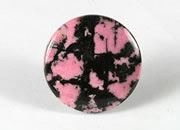 |
Rhodonite is a manganese mineral that sometimes occurs in a very
attractive pink color. Usually translucent-to-opaque, it is a popular
gem material. Rarely, it is transparent and used for faceting. |

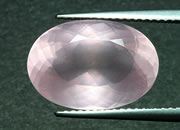 |
Rose quartz is a translucent-to-transparent variety of quartz with a
light to deep pink color. It is a gem material that is very common in
nature. It is usually cut into cabs and occasionally faceted. |

 |
Ruby is the most popular colored stone. When the mineral known as
corundum is of gem quality and a vivid red color, it is called "ruby."
Historically mined in Asia, many rubies such as these are now being
found in Africa. |

 |
Fuchsite is a metamorphic mica with a green color that often contains
bright red corundum crystals or "rubies". It is often carved and cut
into cabochons. Frequently confused with "ruby in zoisite". |

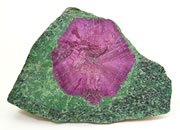 |
Ruby in zoisite is an interesting material. Massive green zoisite often
contains bright red ruby crystals. The color combination makes an
attractive and unique gem material. It is often cut and carved into
small sculptures. |

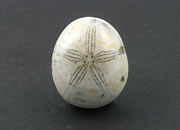 |
Sand dollars found on beaches today are remains of a group of animals
that has lived in the oceans for millions of years. Their bodies are
often agatized by nature and then found by people who polish them into
gems. |

 |
Sapphire is a gem variety of the mineral corundum. When it is reddish
blue to violet-blue, it is known simply as "sapphire." Corundums of any
other color (except red, which is ruby) are known as "fancy sapphires."
|

 |
Star sapphire contains elongated crystals of rutile aligned in three
different directions that cause a properly cut stone to display a
six-ray star. This phenomenon is known as "asterism." |

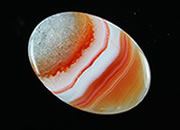 |
Sardonyx
Sardonyx is a member of the chalcedony family. It is a banded agate
that contains bands of bright red alternating with agate of other
colors.
|

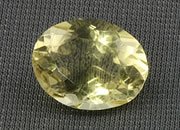 |
Scapolite is a metamorphic mineral that sometimes occurs in transparent
gem-quality crystals that make beautiful faceted gems. Some specimens
contain a silk that can produce a strong cat's eye. |

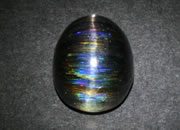 |
Cat's eye scapolite is a gem-quality scapolite with a silk of parallel
mineral fibers. When cut as a cabochon, light striking the stone
reflects from the mineral silk to produce an "eye" that moves across the
stone. |

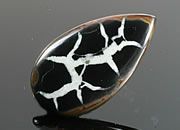 |
Septarian
"Septarian" is a name used for round concretions with internal
mineral-filled fractures found in sedimentary rocks. They are often cut
into cabochons that display the interesting geometry of the fracture
network. |

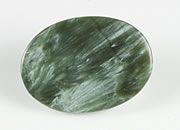 |
Seraphinite
Seraphinite is a trade name used for a gem material composed of the
mineral clinochlore. It is usually greenish in color and marked with
fibrous or feather-like patterns. Its hardness is only 3 to 4 and is
reserved for delicate use.
|

 |
A silicate mineral, that occurs in a wide range of green and greenish
colors with interesting patterns that is often cut into cabochons or
used as an ornamental stone.
|

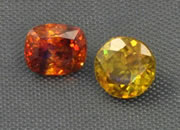 |
Siderite is an iron carbonate mineral with a very high dispersion.
Transparent crystals of siderite with great clarity can be cut into
attractive gemstones with a strong fire. It is too soft for most
jewelry and is a collector's stone. |

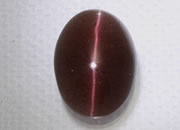 |
Sillimanite is a metamorphic mineral that often has a fine fibrous
silk. When properly cut, cabochons of the material can reflect a sharp
cat's eye. |

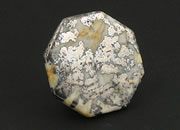 |
Silver is a precious metal that is often present as visible crystals in
its ore. Some people enjoy seeing the bright metal reflecting from the
surface of a cabochon. It is a novelty gem. |

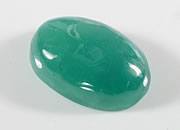 |
Smithsonite
Smithsonite is a zinc carbonate mineral that serves as a minor ore of
zinc and as a minor gem mineral. It is relatively soft and used as a
collector's gem and in jewelry that is unlikely to receive abrasion or
impact. |

 |
Smoky quartz is a grayish brown to nearly black variety of transparent
quartz. It is often cut as a faceted stone or cabochon. Upon heating, it
will sometimes change in color to yellow or yellowish brown citrine. |

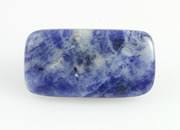 |
A feldspathoid mineral that ranges in color from white to blue to violet
blue. It is often used to make cabochons, tumbled stones and other
lapidary projects.
|

 |
Some specimens of gem-quality labradorite have exceptional color and
labradorescence. These unusual gems are given the name "spectrolite"
because of the spectrum of colors that they reflect. |

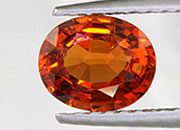 |
Spessartine is also known as "spessartite" or as "mandarin garnet"
because of its yellow-orange to orange-red color. It is a popular
variety of garnet used in jewelry. |

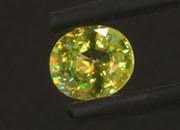 |
Sphene
Sphene, also known as titanite, is a gem with a dispersion higher
than diamond. Specimens of high clarity can be cut into gems with a
brilliant fire. Its softness limits its use to earrings, pins,
pendants, and low-abrasion jewelry pieces. |

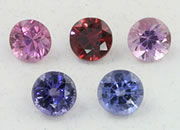 |
A mineral of many colors that has been treasured as a gem for thousands of years. It was often confused with ruby and sapphire. Many of these errors were not discovered until the 20th century. |

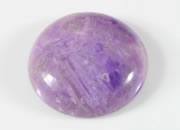 |
Sugilite
Sugilite is a rare silicate mineral only discovered in 1994. It
occurs in yellow, brown, pink and purple and is often combined with
quartz. The purple color has become very popular in the lapidary trade.
Its high price limits its popularity. |

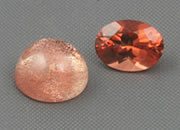 |
A plagioclase feldspar that can be a colorful transparent gem. It can
also contain plate-shaped copper inclusions that produce an
aventurescent flash when moved under incident light. These specimens
are from Oregon. |

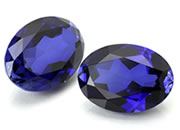 |
Tanzanite is a rare and popular blue variety of zoisite produced from a
small location in the African country of Tanzania. It is a birthstone
for the month of December and is an alternative stone for blue sapphire. |

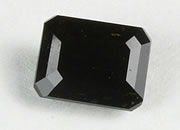 |
Tektites are fragments of ejecta produced when an asteroid struck Earth
about 800,000 years ago. The impact melted the target rock and
scattered a black glass in a strewn field across Southeast Asia.
|

 |
Thulite is a rare, pink, gem-quality variety of zoisite. It can be cut
into beautiful cabochons, beads, small sculptures, and other lapidary
items. |

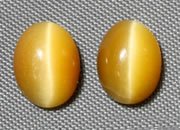 |
Tiger's Eye
Tiger's eye is a material that forms when quartz replaces crocidolite.
When it is cut into a cabochon with its fibrous structure parallel to
the bottom of the stone, a chatoyance, or cat's-eye effect, is produced.
|

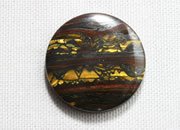 |
Tiger Iron
Tiger iron is a rock composed of alternating bands of silver hematite,
gold tiger's eye, and red jasper. It is cut into attractive and
interesting cabochons, beads, spheres, and other lapidary items. |

 |
Also known as "bertrandite," Tiffany stone is a beautiful material that
is thought to be an opalized fluorite. Found at one beryllium mine site
in Utah. |

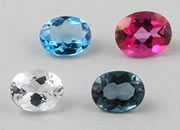 |
Topaz is a popular gem. It is usually clear to amber in color when
mined. It can be heated, coated, or irradiated to produce other colors
that include "Swiss blue," "London blue," bright pink, and soft pink.
|

 |
Tourmaline is a silicate mineral that occurs in a wide range of
attractive colors. It is a very durable gem material that is popular
with jewelry makers. |

 |
Tourmaline (Bicolor)
When tourmaline crystals grow, the composition of their growth fluid
can change. Color-zoned crystals might be the result. These crystals
can be cut into interesting bicolor stones. Some are known as
watermelon. :-) |

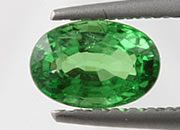 |
Tsavorite is a calcium-rich garnet known for its brilliant green color.
It sometimes serves as an alternative stone to emerald. It is the
most important green garnet and one of the rarest and most valuable
colored stones. |

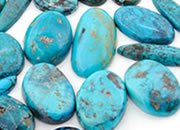 |
A copper mineral with a bright blue to blue-green color. The color is so
familiar and liked that the word "turquoise" is used in the English
language as the name of a color. Only a few gems have a color this
familiar. |

 |
Decades ago, this agate was named "Turritella" after the fossil
snails that it contains. That name is incorrect because the snails
were misidentified. The proper name should be "Elimia agate" after the
snail Elimia tenera. |

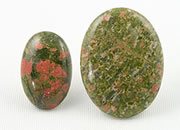 |
Unakite is an igneous rock that contains green epidote and pink
orthoclase feldspar. It can be coarse or fine grained. It is popular as
cabochons, beads and small sculpturers. |

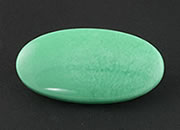 |
A mineral that is similar to turquoise in mode of formation and
composition. It even looks like turquoise but in a blue-green to
yellowish green color. Cut into cabochons, but its use is limited
because it is soft (H: 4.5). |

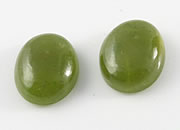 |
Vesuvianite
Vesuvianite is a mineral formed by the contact metamorphism of
limestone. It is often an attractive translucent green color that
reminds people of jade. Rare transparent crystals are faceted. Named
after Mt. Vesuvius. |

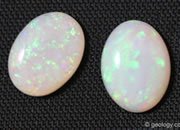 |
"Light opal" or "white opal" are terms used for an opal material
with a white, yellow, or cream-colored body color. This is the most
common body color for precious opal.
There are many types of opal. |

 |
Zircon is a hard, durable gem that occurs in a variety of colors. It has
a high dispersion which produces a nice fire. Colorless pieces have
been used as alternatives to diamond. |
|











































































































































Tidak ada komentar:
Posting Komentar
Bagaimana komentar Anda?